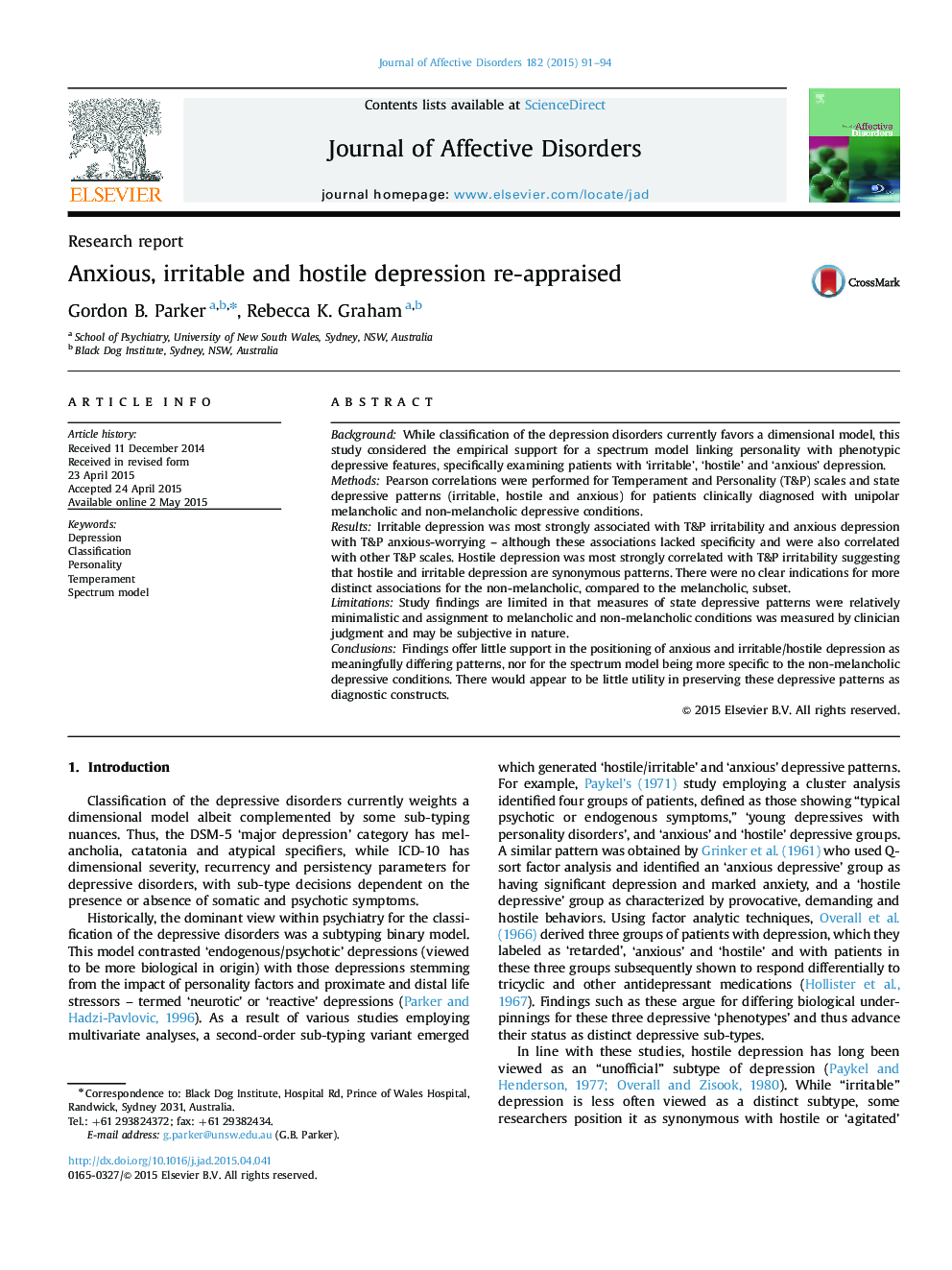| Article ID | Journal | Published Year | Pages | File Type |
|---|---|---|---|---|
| 6231536 | Journal of Affective Disorders | 2015 | 4 Pages |
â¢Anxious, irritable and hostile depression were not shaped by a specific personality styleâ¢Anxious and irritable/hostile depression were not distinct categories.â¢There may be little utility in preserving these depressive patterns.
BackgroundWhile classification of the depression disorders currently favors a dimensional model, this study considered the empirical support for a spectrum model linking personality with phenotypic depressive features, specifically examining patients with 'irritable', 'hostile' and 'anxious' depression.MethodsPearson correlations were performed for Temperament and Personality (T&P) scales and state depressive patterns (irritable, hostile and anxious) for patients clinically diagnosed with unipolar melancholic and non-melancholic depressive conditions.ResultsIrritable depression was most strongly associated with T&P irritability and anxious depression with T&P anxious-worrying - although these associations lacked specificity and were also correlated with other T&P scales. Hostile depression was most strongly correlated with T&P irritability suggesting that hostile and irritable depression are synonymous patterns. There were no clear indications for more distinct associations for the non-melancholic, compared to the melancholic, subset.LimitationsStudy findings are limited in that measures of state depressive patterns were relatively minimalistic and assignment to melancholic and non-melancholic conditions was measured by clinician judgment and may be subjective in nature.ConclusionsFindings offer little support in the positioning of anxious and irritable/hostile depression as meaningfully differing patterns, nor for the spectrum model being more specific to the non-melancholic depressive conditions. There would appear to be little utility in preserving these depressive patterns as diagnostic constructs.
